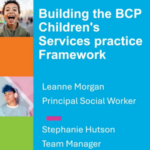Of the 46 social care recommendations in Lord Laming’s report no
fewer than 25 state that “directors of social services
must…”
And it is no surprise, given the failings of the councils that
Victoria Climbie came into contact with, that nearly half of the
108 recommendations in total are aimed specifically at the social
care sector. Within these, much of Laming’s focus has been on
getting directors to take responsibility for day to day, front-line
services.
Laming’s social services recommendations are challenging and would
almost certainly put extra pressure on already stretched
departments, should the government choose to implement them.
Despite Laming’s innovative structure for child protection his
recommendations largely reiterate what is already considered good
practice. Yet the fact that Laming felt the need to spell out good
practice suggests he is unconvinced that senior social services
managers have a clear picture of what goes on below them.
Charles Waddicor, social services director at Oxfordshire, is not
surprised by the content of the recommendations. “They are things
that we should be doing and practices that should be happening but
there is a difference between what should and what does. It’s
giving directors clear responsibility for what is happening and is
a very helpful way of clarifying our responsibility.”
Laming proposes that his recommendations be implemented within
three months, six months or two years. Within three months sounds
like a tall order, but Waddicor considers it achievable.
“Those to be implemented in the next three months are things that
should be happening. If it’s extra work then it’s work that hasn’t
been done in the past. I think people will believe they are already
doing these recommendations, but the trick is knowing you’re doing
it,” he says.
On the surface, Laming’s proposals seem to threaten yet more
paperwork but Waddicor does not think they would increase
bureaucracy.
“I see it as more of an auditing of the quality of work done, and
having systems in place that give you confidence that what should
be happening is happening,” he says.
Problems in recruiting and retaining staff cast a shadow over the
viability of Laming’s proposals.
Recommendation 20 states that social services directors must ensure
that staff in children and families intake teams are experienced in
working with children and families. Few would disagree, but in the
current recruitment climate this requirement is unlikely to be
met.
For Norman Tutt, executive director of housing and social services
at Ealing, increasing the proportion of experienced staff is a job
for others. “It rests with training organisations and the
government to ensure that there are enough trained social workers,”
he says. “Social services are under enormous pressure to take cases
on and often there are not enough staff to do that.”
Recommendation 54 is also likely to have directors raising their
eyebrows. It suggests that “all cases of children assessed as
needing a service have an allocated social worker”.
Waddicor describes this as “tough to achieve” and “a bit old
fashioned”.
“I don’t know if I hold the view that they all need an allocated
social worker. Maybe they should have a named person who they
always have contact with but they might be unqualified. We’ve got
more skill now in matching families with the skill mix of the
people we employ,” he explains.
With regard to Laming’s recommendation 35 for any child who is the
subject of allegations of harm to be seen within 24 hours, Tutt
stresses that most local authorities try to achieve this target
already.
“Whether this can be achieved on a seven days a week basis is
another question. Most local authorities have an out of hours team
at the weekend but one can’t guarantee the same expertise,” he
says.
Laming’s report focuses on the accountability of senior staff, but
some do not think it goes far enough.
“I would have preferred the report to have described much greater
accountabilities across the board,” says Julia Ross, executive
director of health and social care at Barking and Dagenham Council
in east London.
She does not think enough emphasis has been put on the role and
accountability of health chief executives and highlights the
differences between recommendations for health and social
services.
While recommendation 56 states that directors “must ensure” no
child is taken home from hospital before the home environment has
been declared safe, recommendation 60 states that hospital trust
chief executives “must introduce systems” for hospital
discharge.
“There needs to be explicit shared accountability with the NHS
trust and directors of social services. If that’s not reinforced
then we will continue to get that lack of attention to working
across boundaries and sharing responsibility,” she says.
Ross adds that she has “always felt accountable and responsible”,
but considers the responsibility to be shared within and across
organisations, from the individual performance of a social worker
up to director level and beyond to the council and the Department
of Health. She is realistic about what she can achieve and views
her role as ensuring the best environment within the constraints of
resources and staff.
“I can’t make sure there are enough properly trained and qualified
social workers. I can’t do that on my own,” she says.
Overall, Laming’s emphasis on accountability appears to have been
received positively.
John Bolton, social services director at Coventry, says he welcomes
the message that senior managers must take responsibility for what
happens on the front line.
“What he has tried to do for those at the top of the organisation,
who may take their eye off the ball, is to remind us that, whatever
we are doing strategically and in advancing partnerships, we always
have responsibility for the quality at the front line.”
He says that he currently visits front-line staff to get feedback,
but admits that such recommendations could mean that he needs to
introduce “more formal management arrangements so that supervision
sessions are recorded and accounted”.
For some directors, Laming’s idea of making their role more
explicit does not change how they have always viewed their
role.
Mike Leadbetter, former president of the Association of Directors
of Social Services, says that directors have always been aware they
are accountable for services they may not directly manage.
“With vulnerable adults and children I’ve always taken the view
that I am hands on accountable. It’s a pivotal part of a director’s
job,” he says.
However, he does not think Laming goes far enough in his proposals
for supervision, which he says should start with the director and
cascade down the organisation. Directors themselves should also be
able to get supervision from a mentor or an external source, he
says.
Another of Laming’s recommendations makes directors responsible for
ensuring an efficient transfer of a case between local authorities.
This has particular relevance for London, says Norman Tutt, where
people cross boundaries more often and where hospital casualty
departments are not necessarily situated within the same
borough.
While they may have made for uncomfortable reading, social services
directors are broadly welcoming of Laming’s recommendations for
social care.
While uncertainty hovers over the destiny of some of the proposals
the general belief is that the recommendations concerning practice
– and a director’s responsibility for overseeing this – are likely
to make their way into government plans in the near future.
– For more background information on the Victoria Climbie Report go
to www.communitycare.co.uk/climbie



 Bournemouth, Christchurch and Poole
Bournemouth, Christchurch and Poole  Hampshire County Council
Hampshire County Council  Oxfordshire County Council
Oxfordshire County Council  South Gloucestershire Council
South Gloucestershire Council  Wokingham Borough Council
Wokingham Borough Council  Harnessing social work values to shape your career pathway
Harnessing social work values to shape your career pathway  Webinar: building a practice framework with the influence of practitioner voice
Webinar: building a practice framework with the influence of practitioner voice  ‘They don’t have to retell their story’: building long-lasting relationships with children and young people
‘They don’t have to retell their story’: building long-lasting relationships with children and young people  Podcast: returning to social work after becoming a first-time parent
Podcast: returning to social work after becoming a first-time parent  How managers are inspiring social workers to progress in their careers
How managers are inspiring social workers to progress in their careers  Workforce Insights – showcasing a selection of the sector’s top recruiters
Workforce Insights – showcasing a selection of the sector’s top recruiters  Empowering people with Parkinson’s to lead fulfilling lives
Empowering people with Parkinson’s to lead fulfilling lives 

 Facebook
Facebook X
X LinkedIn
LinkedIn Instagram
Instagram
Comments are closed.